Aluminum presence – A Sensitive Topic
Aluminum, also known as aluminium, is one of the elements that raises a lot of controversy when it comes to its impact on our health. As you will soon find out, it is an omnipresent ingredient with which many of us come into contact on a daily basis. In this article, I will explain how it can harm us and address several other important issues, including the use of aluminum pots, as well as cosmetics and medicines that contain it in their composition.

Is it a naturally existing chemical element?
Many of you can believe that aluminium was invented by humans and is used to store most popular soda drinks and some types of semifinished products.
Here’s some truth “slap”..
🤦♀️ You can’t be more wrong…
Somehow of an Introduction 😉
I will start with whether the presence of aluminum in nature is a cause for concern and whether this element poses a real threat to us.
Based on toxicological studies conducted on animals, scientists have determined that the relatively safe amount of aluminum that our body can consume with food without negatively affecting our health is 1 milligram per kilogram of body weight per week.
This is the so-called tolerated weekly intake. I don’t want to argue here with scientists whether such an amount of aluminum is really safe, but even if we assume that it is, various reports published in recent years clearly indicate that some of us are consuming too much aluminum. And that’s a fact, me included.
Unfortunately.
In the case of some adults, we observe an exceedance of these limits by over 50%, while in the case of children and adolescents, it may be even nearly 150%.

Everyone is Loaded with Aluminium, You Say?
Of course, it’s not the case that every one of us is overloaded with aluminum.
Nevertheless, based on available publications issued by scientific institutions, the daily exposure to aluminum for some people can be so high that it poses a real health threat.
If it is already known that we can actually be exposed to excessive amounts of aluminum, I will briefly explain to you now what specific consequences may be associated with this.
As for the negative impact on the body, first and foremost, I must say that aluminum is a neurotoxin that can cause neurodegenerative changes in the brain.
Without going into details, I will say that I came across an extensive scientific paper from 2016 that showed that people chronically exposed to higher doses of aluminum are up to 71% more likely to develop Alzheimer’s disease, and in some people, the risk is even more than twice as high.
Health hazards associated with exposure to aluminum can also include the weakening of the bones due to high levels of this element.
Due to certain similarities between aluminum and other metals such as calcium or magnesium, this toxic element can to some extent displace valuable mineral components from bones, thereby weakening their structure. Such observations were actually made by scientists in an experiment on animals. They noted that administering water containing aluminum to rats resulted in a decrease in bone mineral density.
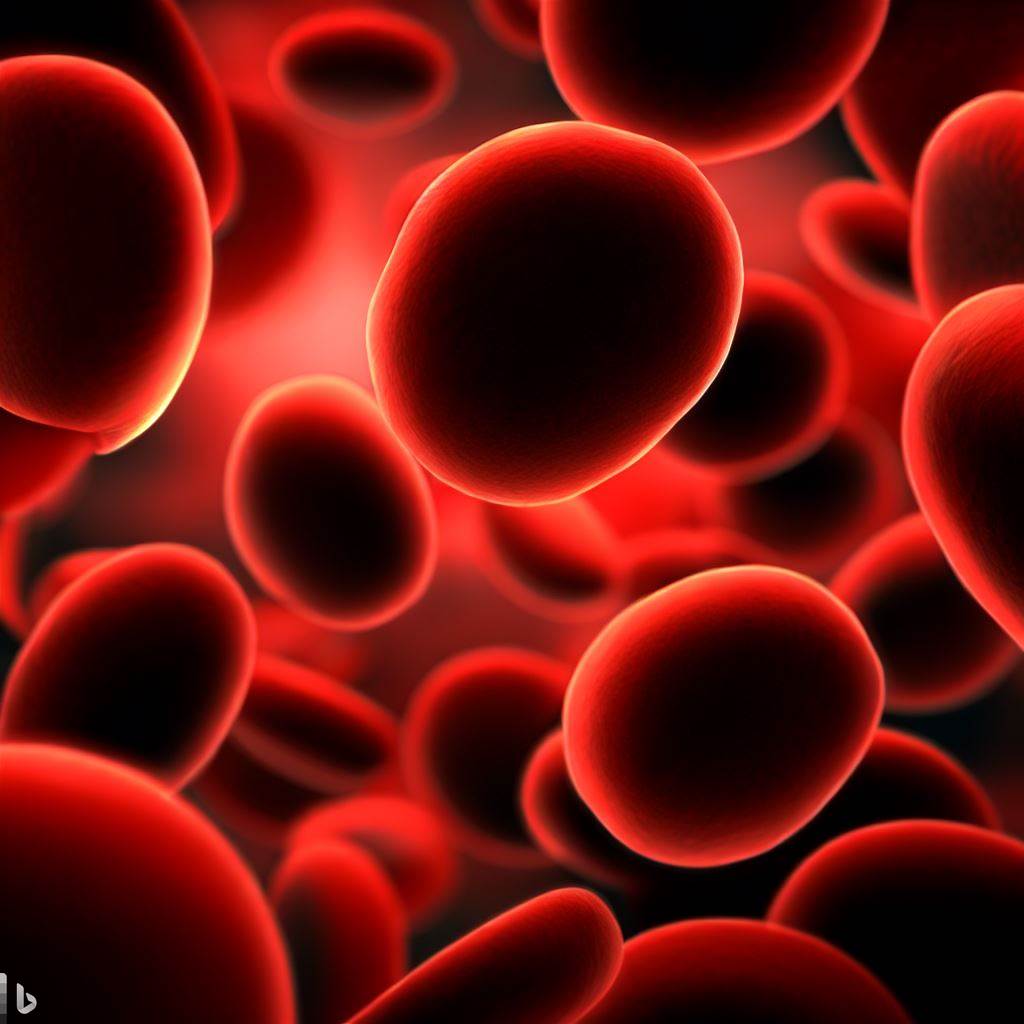
Anemia and High Aluminum Exposure
Based on the biochemical processes that occur in our body involving aluminium, it can also be suggested that large amounts of this toxic element contribute to the development of microcytic anemia, in which our red blood cells are abnormally small in size and are unable to perform their functions, including the efficient transport of oxygen to cells.
Without delving into the intricacies of biochemistry, I can say that this is due in part to the fact that aluminum inhibits the formation of heme, which is the component of red blood cells responsible for carrying oxygen.

Health threats for some occupational groups
It should be known that aluminum can enter our body through the respiratory system.
This hazard occurs mainly in the case of workers employed in bauxite mining and processing, welding industry workers, as well as among those involved in the production of paints, fuels, and explosives.
These people may develop aluminosis, a lung disease caused by the penetration of aluminum in the form of dust into the respiratory system.
This disease leads to dangerous lung fibrosis.
Symptoms of this disease may include shortness of breath and a dry cough.

Worrying link between antiperspirant use and breast cancer
Speaking of the health effects of absorbing aluminum through various routes, I will briefly mention the opinion that this element is a cause of breast cancer.
This belief arises from two reasons: at the cellular level, aluminum causes certain hormonal effects, such as overproduction of estrogen, the female hormone.
It is known that high levels of estrogen in the body promote the development of breast cancer.
The second issue relates to the use of antiperspirants, which contain aluminum among other ingredients. It happens that breast cancer is located near the armpit, where these types of products are applied.
Moreover, researchers have found many chemical substances from antiperspirants in breast tissue, especially in women with breast cancer. All this suggests that aluminum, even when applied to the skin in the form of the aforementioned products, may increase the risk of this type of cancer.
However, despite these indications, reviewing the results of various studies, including reading expert opinions, one can conclude that aluminum does not contribute to the development of breast cancer. In my opinion, however, this is not so clear-cut.
For example, in recent years, in 2017, an international team of researchers noted a significant association between frequent use of antiperspirants and breast cancer. Specifically, the risk was almost four times higher.
Moreover, the concentration of aluminum in breast tissue in women diagnosed with cancer was about 50% higher. Based on the obtained results, the authors of the experiment wrote in the summary of their work that frequent use of antiperspirants leads to the accumulation of aluminum in breast tissue, and using these products more than once a day may increase the risk of breast cancer.
Personally, I agree with the message that overuse of antiperspirants may pose some health risks. Of course, using them from time to time will not be a threat, but I would not recommend using such products several times a day for a long time, in a span of several years.

Tips for Safer Cooking and Baking
Knowing that aluminum is not neutral for our health and what’s more, that there are legitimate concerns that some of us may be supplying it in too large quantities, creating a real danger for ourselves, I will now explain where this element can enter our body.
According to experts, the main factor exposing us to aluminum is food. However, this problem does not concern raw food, which has not undergone any production processes. Of course, aluminum is present in natural products, but in trace amounts that are insignificant.
The exception in this case is tea leaves and herbs, which can accumulate quite significant amounts of this element, but I will talk about it later in the material.
A bigger problem is the use of various vessels and materials that contain aluminum. The first thing that comes to mind is aluminum pots, from which this element can penetrate into food. And indeed, such a threat exists. However, I will note that this mainly applies to uncoated or pots with a damaged protective coating. If we have pots, for example, with a granite coating, then aluminum penetration does not occur, or it is completely insignificant.
As for the migration of aluminum from kitchenware and other aluminum packaging to food, it should be known that if it occurs, it only or mainly occurs under certain conditions. Namely, aluminum migration is favored by an acidic, highly alkaline, or salty environment, that is, we are talking about, for example, citrus fruits, tomato products, or sauerkraut. Such products, when in contact with an aluminum coating, more easily extract this harmful element from it. Similarly, increased migration of aluminum is caused by increased temperature, i.e., for example, boiling, frying, or baking.
Given this information, if we have low-quality aluminum pots, it is best to replace them with new ones or at least not cook acidic and salty products in them. At the same time, for the sake of the material’s reliability, I must emphasize that the level of aluminum absorption from the digestive tract is low and is below 1%. The vast majority of aluminum consumed is excreted from our body.
Here, I will add that if we want to limit contact with aluminum from all possible sides, when it comes to pots, instead of aluminum ones, we can choose stainless steel ones. With this solution, if someone among you is sensitive to nickel, then we choose stainless steel with the 18/0 marking, which is free of this element’s addition.
I consider aluminum foil and trays to be much worse than aluminum pots, which do not have such a protective coating. Research has shown that the aluminum content in some baked food products in foil can increase even 40 times. However, I must note that if someone uses aluminum foil very sporadically for this purpose, for example, grills a few times in the season, then there is no reason to worry. However, if this foil is used frequently, it is better to change our culinary practices a bit.
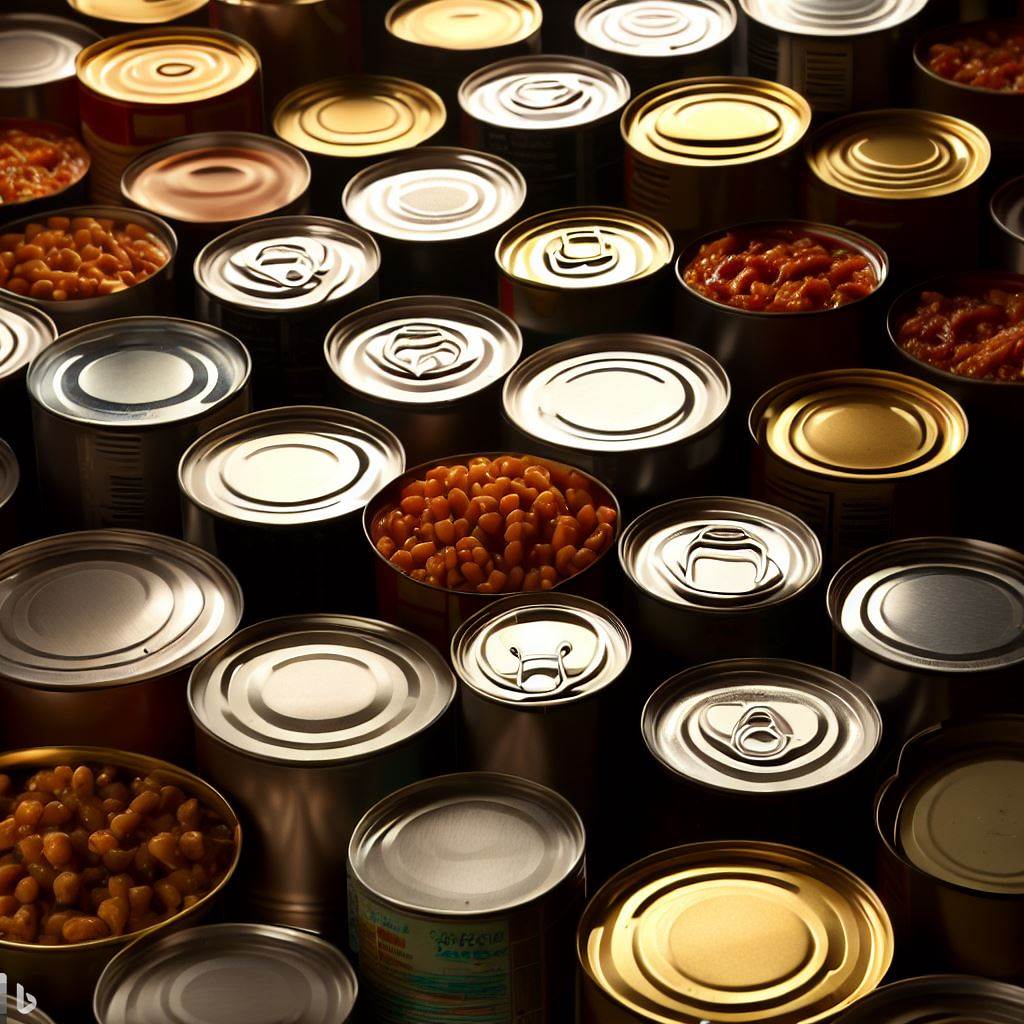
Is food stored in aluminium cans safe to consume?
Speaking of materials that come into contact with food, I will briefly mention aluminum cans in which drinks are sold or which are used to produce canned meat, fish or fruit products.
Specifically, the situation here is very similar to that of pots, meaning that these containers are lined on the inside with an appropriate coating that prevents aluminum from being released into the food.
However, it is not a barrier that prevents the release of this harmful element 100%, especially when it comes to salty fish, tomato products, or acidic drinks enclosed in such containers. Nonetheless, if we only occasionally reach for such products, I don’t see any danger here, at least when it comes to aluminum itself, as we are discussing.
A separate issue is that these protective coatings are often made of Bisphenol A, which we have many health safety concerns about, but this is a topic for a separate article.
Nonetheless, I will say that I am not convinced that using a Bisphenol A protective coating is not a case of jumping out of the frying pan into the fire…
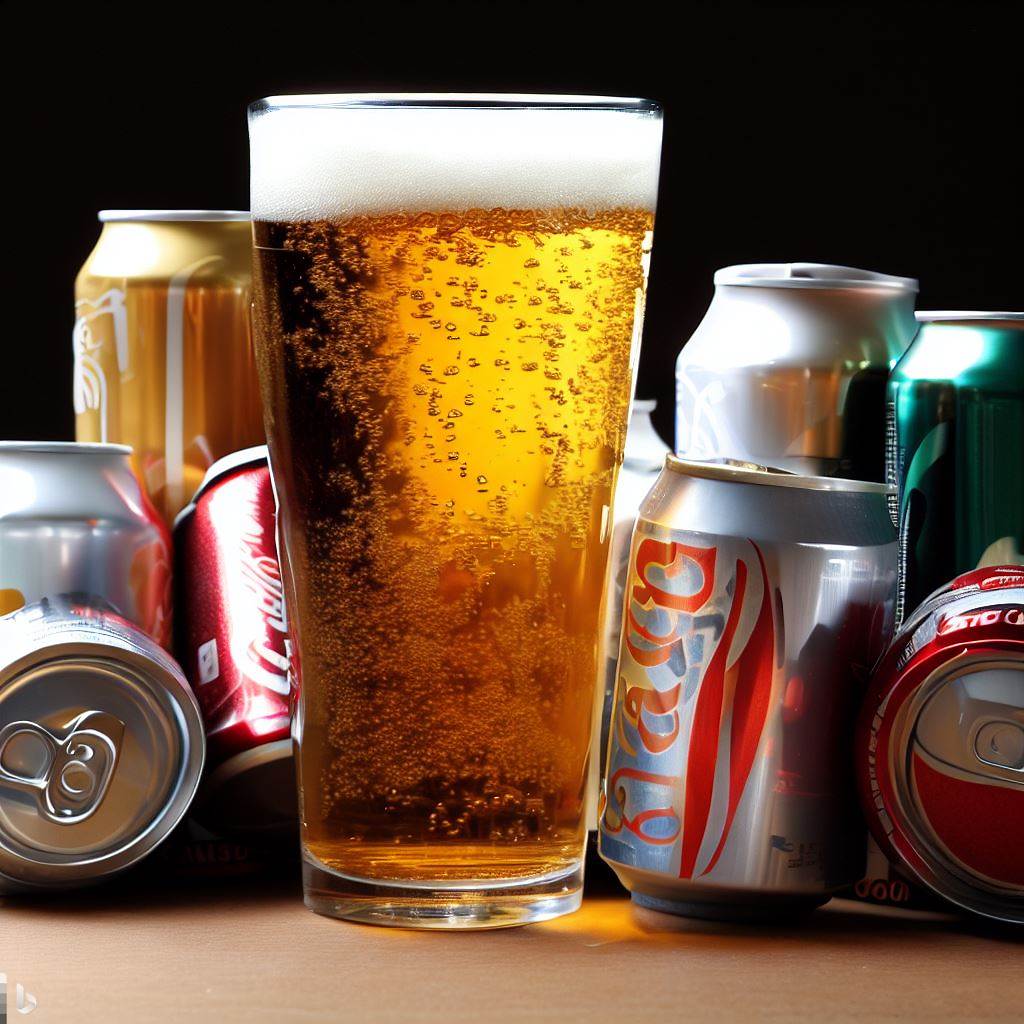
Do you like soft drinks or beer?
Drinking excessive amounts of beer in cans may result in overexposure to aluminum, as aluminum cans are lined with a coating that prevents the beer from coming into direct contact with the aluminum.
However, this coating can sometimes wear off or break down, causing small amounts of aluminum to leach into the beer. While this may not be harmful in small amounts, excessive consumption could potentially lead to overexposure to aluminum.

Harmful food additives
When it comes to other sources of aluminum in food products, it’s worth knowing that some food additives used in the food industry also contain this element.
These include additives numbered from E520 to E523, E541, and additives from E554 to E556, which are used as binding agents, acidity regulators, and anti-caking agents, among other things.
Although they are used very rarely and in small amounts, consumers should be aware of their existence and presence in food.
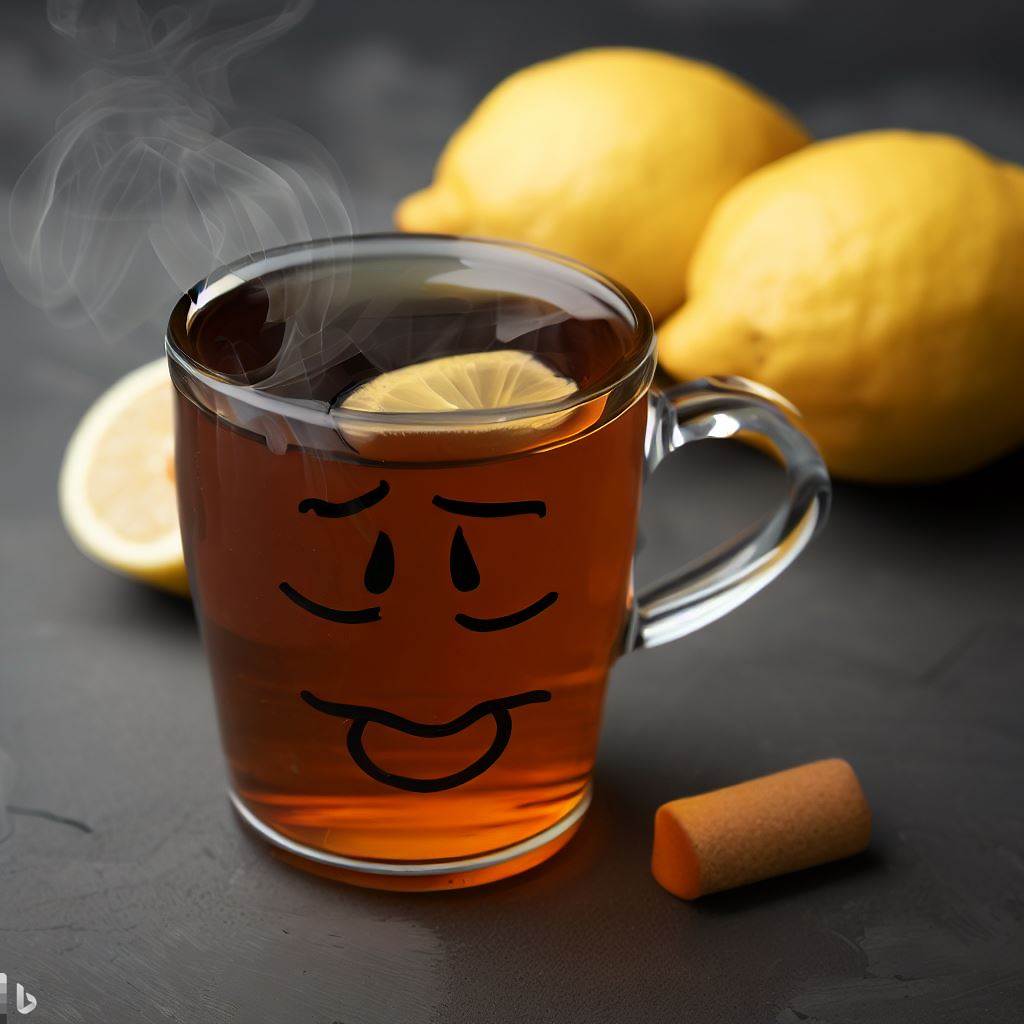
When life gives you lemons, think twice before…
Adding them to your tea! Tea leaves accumulate significant amounts of aluminum.
Meanwhile, the addition of lemon to brewed tea causes citric acid in lemon to combine with aluminum in tea leaves, resulting in the formation of aluminum citrate, which is characterized by better absorbability, meaning more of this component is absorbed in the digestive tract. In addition, lemon lowers the pH of tea, making it easier to leach aluminum from tea leaves into the brew.
Indeed, studies have shown that adding lemon increases the level of aluminum in the infusion by several dozen percent. In essence, it can be assumed that 1 cup of such tea contains about 0.000053 ounces (1.5 milligrams) of aluminum. I remind you that the established safe weekly limit for aluminum is 0.000053 (1 milligram) per kilogram of body weight per week. Thus, for a person weighing 132 pounds (60 kilograms), the permissible aluminum intake is approximately 0.002 ounces per week (approx 60 miligrams), or 0.0003 ounces per day (about 8.5 milligrams) per day.
Assuming that we consume an average of 3 teas per day, we supply 0.00016 ounces (4.5 milligrams) of aluminum, which is about 50% of the established limit. Considering that tea is one of the main sources of aluminum in our diet, it does not seem like a lot. Moreover, the level of aluminum absorption in the digestive tract is very low, and the addition of lemon does not make a significant difference here.
Moreover, studies have directly shown that consuming 2 teas per day, or 16.9 fluid ounces (500 milliliters), does not significantly increase the level of aluminum in the blood. However, if you prefer to be cautious, to limit the potentially unfavorable effect of adding lemon on the increase of well-absorbed aluminum concentration, it is sufficient to brew the tea first, then strain the leaves and only then add the lemon.
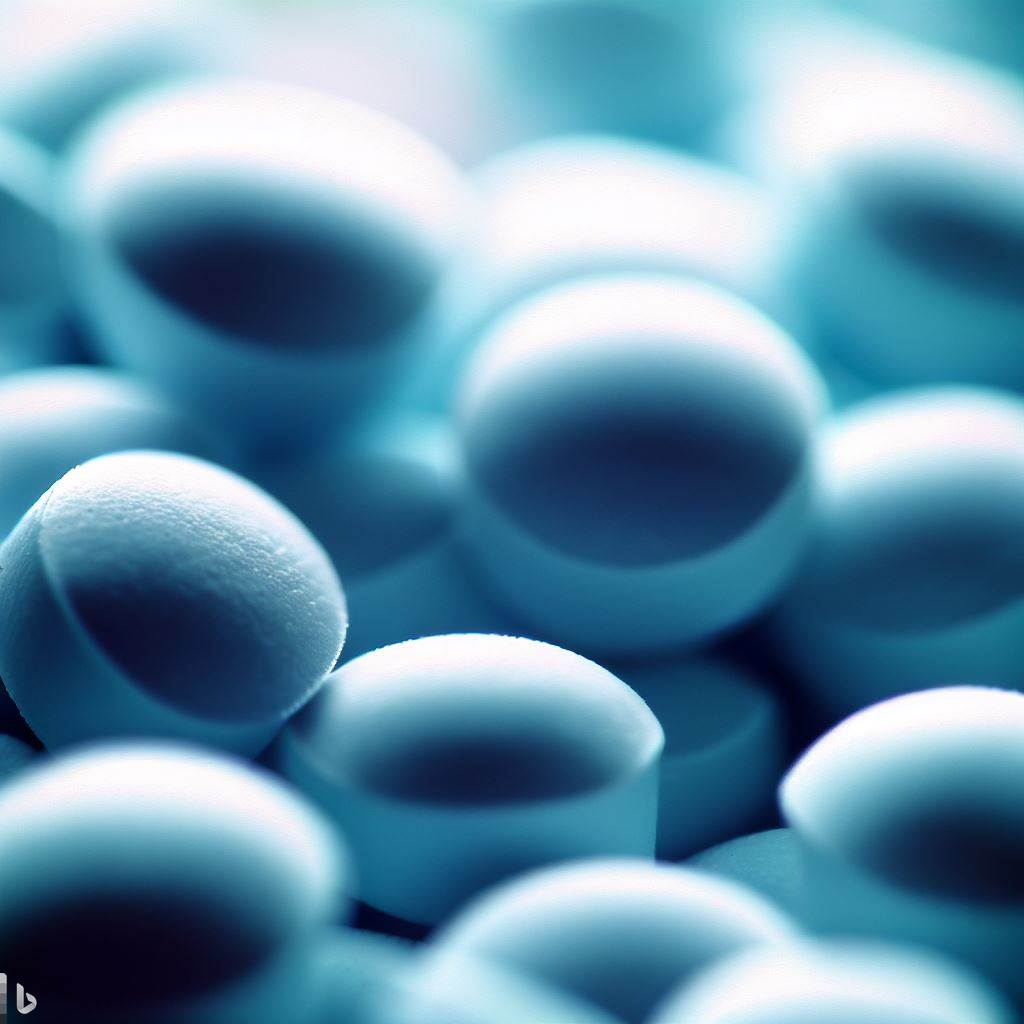
Aluminum in heartache treatment drugs. Good or bad?
It is good to be aware that aluminum, also known as alum, is included in some medications. I am specifically referring to antacids used in the treatment of diseases such as gastroesophageal reflux disease, inflammation of the stomach lining, as well as gastric and duodenal ulcers.
These types of medications provide much more aluminum than what is found in kitchen utensils or aluminum foil.
However, it’s interesting to note that the aluminum present in these drugs has certain health benefits. After consuming the medication, the aluminum reacts with the hydrochloric acid in the stomach, resulting in the formation of aluminum chloride, which has anti-inflammatory properties and acts as an astringent.
In addition, aluminum compounds also protect the cells of the stomach lining from damage because they enhance the release of protective bicarbonates in the stomach. Furthermore, the aluminum in these drugs is absorbed in trace amounts in the gastrointestinal tract, with over 99% of this component being excreted in the urine.
This shows that this element has certain beneficial uses, but of course, it is not my intention to promote its use.

Are your beauty cosmetics safe to use?
Apart from food and medication, some cosmetics can also be a source of aluminum. Recently, I mentioned antiperspirants and the potential risk associated with breast cancer.
Frequent use of these products can increase the amount of absorbed aluminum, and it’s somewhat similar with sunscreens.
Some products in this category also contain aluminum, although it should be noted that we tend to use sunscreen creams quite rarely and in small amounts, so they actually don’t provide too much of the discussed ingredient.
It is worth mentioning that lipsticks and lip glosses may also contain aluminum.
However, due to the fact that they are used in very small quantities, and no one actually swallows the applied cosmetic as it may happen, for example, with toothpaste, and the absorption through the skin is minimal, such products do not provide a noticeable amount of the discussed ingredient.
Taking these facts into account, it can be said that frequent use of cosmetics containing aluminum may significantly increase our body’s exposure to this toxic element.
Therefore, it is a good practice to choose products that are free of aluminum compounds.

Aluminum in toothpastes
I think that for some of you, it may come as a surprise that aluminum, in the form of, for example, aluminum chloride, is also present in some toothpaste.
Therefore, if you use fluoride toothpaste, it’s better to choose those that contain sodium fluoride instead of aluminum fluoride.
At the same time, I will also add that we can find aluminum in many whitening toothpastes. In these types of products, the source of aluminum is usually aluminum oxide or hydroxide.
Unfortunately, we do not know how much aluminum each toothpaste contains, so it is difficult to assess our exposure to this harmful element.
However, as various studies show, the aluminum content in some of these products can be relatively high, and these products can be a significant source of this element.
Perhaps this raises the question whether fluoride in toothpaste is necessary and safe?

Conclusion
Discussions are still an ongoing thing regarding the level of aluminum that does not pose a threat to us and to what extent this ingredient can actually affect our health.
In my opinion, it is reasonable to try to limit exposure wherever possible by using appropriate cookware with protective coatings, only occasionally using aluminum foil for baking acidic, pickled, and salty foods, not relying primarily on canned foods, choosing cosmetics without the addition of aluminum, or using protective masks and clothing if required by the job position.
I believe that avoiding harmful factors is one of the main elements of preventive health care.

